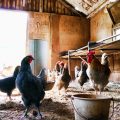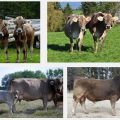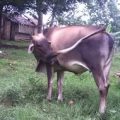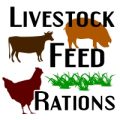Low Cost Veterinary Treatments for Livestock
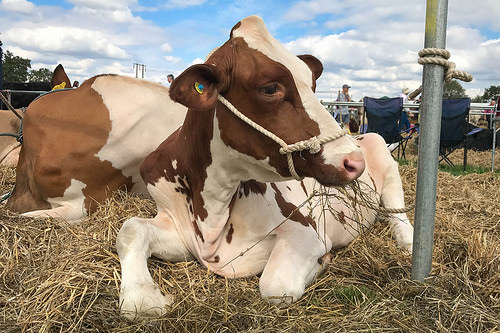
Practice: Use of Newspapers to Remove Amniotic Fluid from Newborn Piglets
- Location: Southern Kyoungnam Province, Korea
Technical Description
Newspapers are softened by crushing a few pages together. The amniotic fluid of newborn piglets is cleaned with the softened newspapers.
Uses and Merits
Cleaning one piglet needs two or three sheets of newspaper. Newspapers should be burnt within 3 – 4 hours after cleaning.
Background
Cleaning the newborn piglets’ amniotic fluid requires a lot of gauze or cloths. Many pig farmers read newspapers and throw them out after reading. The softened newspapers are very good at absorbing fluids and can easily be disposed of by burning.
Treatment of Skin-Diseases with Ointment Made of Waste-Oil and Sulfur
- Location: Western Chonbuk Province, Korea and elsewhere
Technical Description
The ointment is made using 1 liter of used engine-oil and 10 grams of sulfur. The affected skin is cleaned with an iron brush and the ointment is applied for a couple of days.
Uses and Merits
Small-scale farmers in remote areas do not have enough housing or open ground for their animals, particularly cattle and dogs. Since the animals live in crowded conditions, they are vulnerable to skin diseases. Many skin-disease ointments contain sulfur or its mixtures.
The ointment described herein is not costly as it is made from used engine oil, which is abundant in farm machinery in rural areas.
It is easy to apply and almost free from harmful side effects.
Expert’s Comments
Preventive hygienic practices, such as keeping barns clean and supplying sufficient nutrition, are recommended. Isolating infected animals from healthy ones is also strongly advised
Stingray Intestinal Oil for Ringworm Treatment in Cattle
- Location: Southern Kyoungnam Province, Korea
Technical Description
Stingray intestines are put on a thin iron plate. The iron plate is heated until reddish oil is extracted. The collected oil is cooled and kept in a bottle. The oil is applied to the skin infected with ringworm 2 – 3 times a day for a couple of day.
Uses and Merits
Ringworm is one of the biggest problems for the small-scale traditional cattle farmers, who often are not willing to buy commercial ointments. This ointment therefore is an inexpensive prescription.
Stingray intestines are readily available near seaside areas and use of them helps reduce the waste problem on marine food byproducts.
Reservations on Its Use
Attention should be paid to avoid the flow of stingray intestinal oil into cattle eyes. Extracting the intestinal oil from fresh stingrays is recommended.
Dried Mugwort (Artemisia Asiatica) for Cattle Bloat
- Location: Central Kyoungbuk Province, Korea
Technical Description
The dried mugwort is burned at the cattle shed and the smoke is inhaled twice daily for three days by cattle with bloat. The smoke stimulates the cranial nerve, which causes the cattle stomach to eliminate gases.
Background
Mugwort (Artemisia asiatica) is an edible wild plant in Korea. It is used as a medicinal herb for patients with stomachache.
Expert’s Comments
The Sungju Rural Extension Office carried out a practical trial in 1993. A four-year old cow recovered completely from bloat in three days. Other local herbs can replace mugwort.
Wallows for Water Buffalo (for Cooling and Protection against Insect Bites)
- Location: Philippines and elsewhere
Technical Description
Mud wallows and river are the natural cooling places for water buffalo. During intense heat or after work in the field, farmers allow their work animals to rest in wallows. In the process, mud covers them, cooling the animals and later protecting them from insect bites.
Uses and Merits
Farmers raising water buffalo (the swamp type) traditionally provide the animals with wallows. These give ample cooling and protection from insect bites to animals. Cooling in rivers and streams on the other hand is a healthy practice if the water is relatively clean, because animals can drink from it. On the part of the farmer, it is better to manage and handle clean animals.
Reservation on its use
Although water buffalo are aquatic animals, they are not free from infestations of parasites and diseases. Parasites are easily picked up from stagnant water, mud holes and even from rivers. In these wallow areas, the animals urinate and defecate and therefore diseases vectors and parasites are easily transmitted.
Another limitation in the wallowing habaits of buffalo is that animals creat wallow holes in the pasture that destroy the land. The wallow holes full of stagnant water serve as a habaitat for mosquitoes and parasites.
Expert’s Comments
Allowing the animals to wallow in flowing rivers or streams, or merely giving the animals a manual bath or shower, are safer ways of cooling the animals. On the other hand, as part of the regular animal health practice, regular deworming and vaccination are necessary to ensure that the animals are protected. Animals should not be allowed to wallow in polluted holes.
While the buffalo are at rest in the wallow, rumination also takes place. Research has shown that the animals spend 145 minutes in the wallow over a 24-hour period. Where animals have a choice between several wallowing points, they prefer to wallow rather than stay under the shade of trees during hot periods of the day.
Pine Needle Juice As a Binding Medicine for Cattle Diarrhea
- Location: Central Choongnam Province, Korea
Technical Description
Pine needles are ground and the pine-needle extract is mixed with clean water at a rate of 3:7. One liter of the juice is administered three times a day to adult cows suffering from diarrhea.
Use and Merits
Goat farmers feed pine-tree branches to their goats suffering from diarrhea. Medicines containing this are already in the market. Koreans have also used pine needle powder as a restorative agent for digestive disorders. Hence, the use of the juice to treat cattle diarrhea is recommended.
It is easy to collect pine needles in mountainous rural areas. The treatment is more effective in adult cattle than in calves or heifers.
Reservations on Its Use
Calves should not be given this treatment since their stomachs are not yet well developed. Farmers should ensure that the pine-needle juice is not administered into the cow’s airway.
Expert’s Comments
The species of pine trees in other countries could be different from those in Korea. This prescription must be tested locally.
Movable Hoof-Trimming Pen
- Location: Taiwan, R.O.C.
Technical Description
Regular inspection of the hooves of all dairy cattle, especially the older and larger cows housed in stanchions, reduces the incidence of foot rot, lameness, and other foot troubles. In view of the limited space on dairy farms in Taiwan, a movable trimming machine is very helpful.
This device is composed of a horizontal bar and moveable arms. The height of the horizontal bar should be set to suit to the size of the cattle in the feeding stall. The bar prevents them from shaking their heads while they feed. It is made from the same metal, with the same diameter, as the bars used for the stall. The moveable arms are made of steel, and are hinged to swing back against the stall.
When not in use, the horizontal bar is pushed back flush with the edge of the pen, to save space. Before and during feeding, the moveable arms are swung out so that the horizontal bar is in position over the feed trough.
Use and Merits
In Taiwan, dairy cows spend most of their time in houses with concrete floors. Excess tissues thus build up on the bottom of their hooves. The heels, the hocks and the pasterns are subjected to extra stress. If these conditions cannot be corrected in time, permanent foot damage such as crooked legs and pastern weakness, will result, and the milk production, reproduction and longevity of the cows will be detrimentally affected.
The device used in Taiwan can be moved to any place on the farm where the animals need treatment. The construction of the trimming machine is the same as that of cattle crush where animals are immobilized.
Reservations on Its Use
Care must be taken to fix the animal firmly in the pen, and not to use the pen directly after feeding.
Bathing Goats in the Sea
- Location: Southern Leyte, Philippines
Technical Description
Goats are bathed in the sea to control external parasites and make their hair glossy and healthy.
Uses and Merits
External parasites such as ticks and lice leave goats thin, sickly and constantly scratching. Usually the skin and coat become dry and dandruff-filled. Just as the use of salt in animal diets helps improve nutrition, so saltwater controls external parasites and helps make the hair glossy and healthy.
Coastal farmers who immerse their animals in seawater from time to time have proven this. Also, goats that have learned to drink seawater tend to be in healthy physical condition, with a shiny coat.
Reservations on Its Use
The practice is limited to coastal areas. Regular bathing during cold periods of the day or in inclement weather may pose health problems for the animals.
Expert’s Comments
There can be few reservations on the acaricidal effect (i.e. killing mites) of salt water on goats. The bathing and handling also give the animals an opportunity for good hygiene and reduce their undesirable odor. A shiny coat is indicative of the animals’ good health condition. Constant handling of the animals while they are being bathed tames them and makes them responsive to the raiser.
Zeolite Powder to Prevent Diarrhea in Piglets
- Location: Central Kyoungnam Province, Korea
Technical Description
Zeolite powder is scattered on the bodies of newborn piglets. The amount of zeolite needed is 700 g for seven days or 100 g daily.
Uses and Merits
Diarrhea of piglets is a major problem among small-scale pig farmers. A farmer in Changnyong County, Kyoungnam Province Korea, thought of providing zeolite to piglets when he saw that piglets raised in the open field are healthier than those in the barn.
Zeolite is also used for soil improvement in Korea. English scientists carried out experiments during the 1960s _ 1970s on zeolite as a feed supplement for piglets to reduce diarrhea.
Expert’s Comments
The treatment should be tested before it is applied in other countries.
Improved Pig Semen Inseminating Device
- Location: Taiwan, R.O.C.
Technical Description
This inseminating device consists of two tubes. The front tip of the outer tube is equipped with a sponge. The front end of the inner tube is stuck with a stainless ball with a hole for semen outlet.
Uses and Merits
The traditiional inseminating device is prone to hurt the cervix due to its rough front end. However, the improved device can avoid piercing the delicate mocosa of the cervix. Besides, it can directly inject the semen into the cervix.
Application of this inseminating instrument can guarantee the back flow of the semen. Thus it can improve the conception rate and litter size. The apparatus can also be applied as an injector when embryo transfer is performed.
Reservations on Its Use
The inseminating device must be cleaned and sterilized after being used. Otherwise it will become a germ transmitter. (Patent number: 830593 in Taiwan).
Cart for Transportation of Dead Animals
- Location: Taiwan, R.O.C.
Technical Description
This device allows farmers to transport the dead bodies of large animals such as cattle. A two-wheeled transporter is constructed of soldered metal bars. (The design resembles the two-wheeled baggage cart used by air travelers to transport a large suitcase). It is fixed to the back of a carat by a steel chain. The point at which the chain is fixed to the carat is strengthened by a metal bar.
When a carcass is to be moved, the cart is brought beside the animal. The transporter is laid down on the ground beside the dead animal, which is lifted or rolled onto it. The carcass is strapped to the transporter, and the chain is tightened so that the transporter returns to an upright position behind the cart. The cart can then be driven away, dragging the transporter and carcass behind it.
Uses and Merits
Labor is becoming more and more scarce in rural areas. It is very difficult for one farmer to carry large animal carcasses. This self-operated transportation cart enables a farmer to move a large carcass on his own.
Reservations on Its Use
The cart must be cleaned after every use to avoid transmitting bacteria.
Source: http://www.agnet.org/library.php?func=view&id=20110729094119&type_id=2

